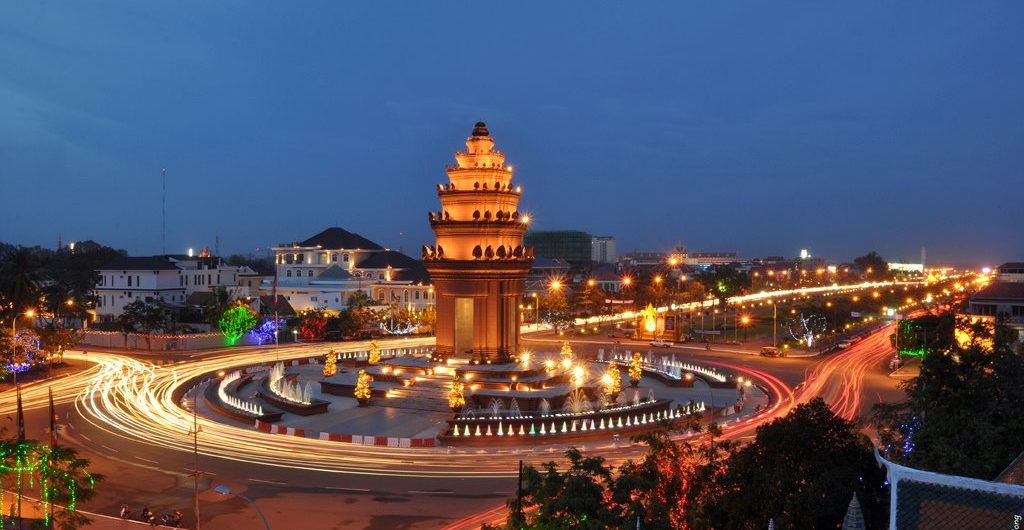As the foremost destination in almost all Cambodia tour itineraries, the city of Phnom Penh is known among tourists, yet not all know about the top Phnom Penh tourist attractions they should prioritize to see. Described as “charming and magnificent” by many presses and posts, this capital city of the kingdom has never failed to attract visitors, so getting there, you’re likely to come across many international holidaymakers alike.
Geographically, Phnom Penh is in the south-central region of Cambodia, and its municipality is on the banks of three rivers: the Tonle Sap, the Mekong, and the Bassac, which offers a spectacular view and rich water resources. Historically, Phnom Penh remained a royal capital for 73 years (from 1432 to 1505). Going through the French protectorate of Cambodia, the city preserves numerous colonial-style buildings scattered along the grand boulevards. Besides, it hosts the nation’s important Buddhist sites and historical monuments which are open for tourism. Once called the “Pearl of Asia” and one of the loveliest French-built cities in the Indochina region in the 1920s, Phnom Penh grows to be an economic, industrial, and cultural center of Cambodia. The city’s infrastructure has witnessed major modernization with railways and airlines. After the ups and downs of history, Phnom Penh is home to more than 2 million residents who are known for their friendliness as well as the well-preserved Khmer culture and Khmer food. The list of the top tourist attractions in Phnom Penh well as a handy list whenever you ask what’s next to see.
National Museum of Cambodia
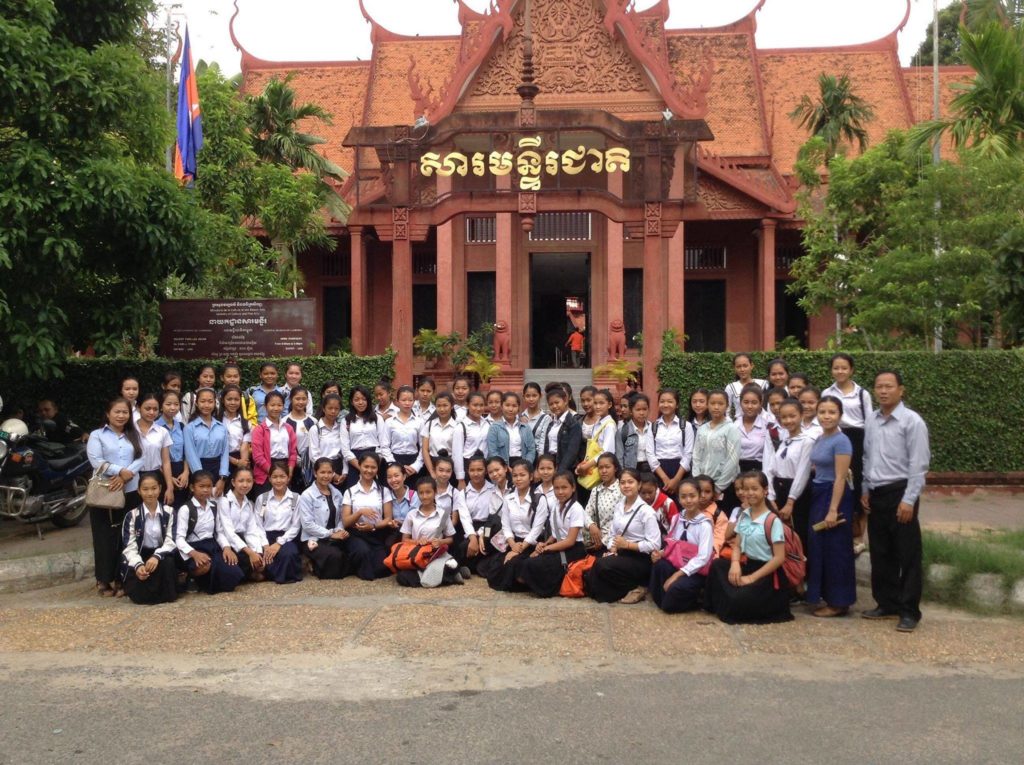
The first must-see Phnom Penh tourist attraction is National Museum of Cambodia. It is the largest museum of culture, history, and archaeology in Cambodia. The National Museum is situated on Street 13 in central Phnom Penh. The site houses and exhibits one of the biggest collections of Khmer art in the world. There, visitors can find the sculptures, ceramics, bronzes, and ethnographic objects of the ancient Khmer. The collections consist of more than 14,000 objects dating from the prehistoric periods to the times before-during-and-after the Khmer empire. The buildings of the museum were inspired by Khmer temple architecture, erected between 1917 and 1924. Officially, it was inaugurated in 1920. Until now, the museum helps later generations to understand, learn, and admire the culture and heritage of the kingdom, targeting to educate them and provide knowledge on the spot. It also provides a source of identity and national pride to Cambodians. Besides the bronze and sandstone statues, the collections include significant Buddhist and Hindu sculptures with religious meanings.
Royal Palace of Cambodia
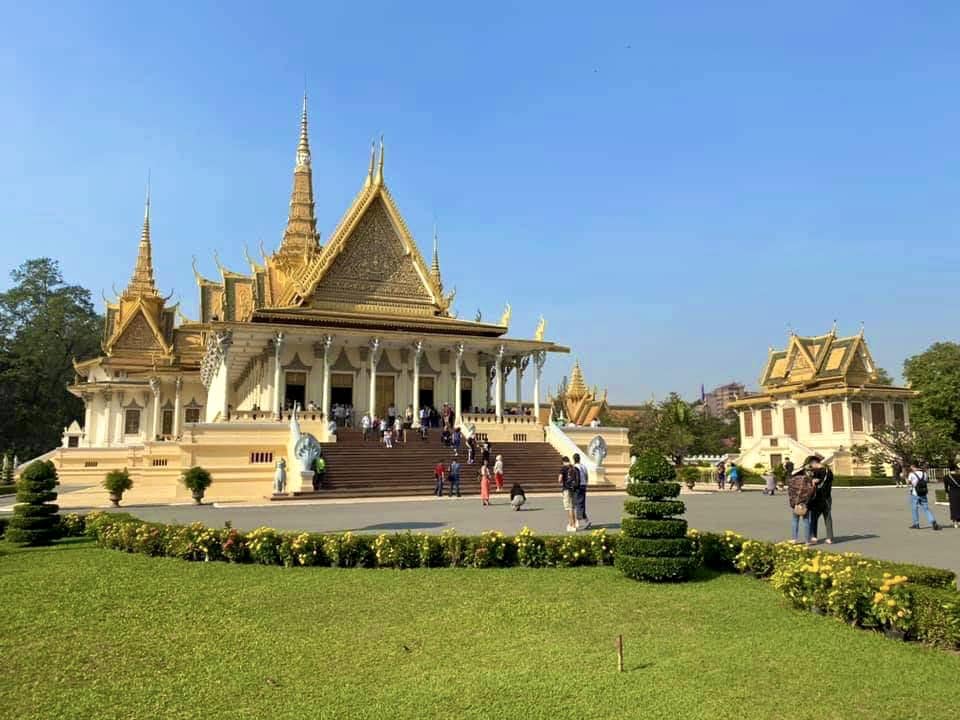
The second tourist attraction in Phnom Penh that people look for on Cambodia Tour is the Royal Palace – a complex site consisting of buildings that functioned as the royal residence of the King and his family. The Palace was erected in the 1860s and it had been occupied by the Cambodian monarchs since its foundation, followed by a period of being abandoned when it came into turmoil due to the Khmer Rouge’s evils. Between 1866 and 1870, the Royal Palace was finished after King Norodom decided to relocate his royal capital city from Oudong to Phnom Penh. Its architecture reflected a classical example of Khmer quintessence with defensive walls, the Throne Hall, the Temple of the Emerald Buddha, stupas, mural paintings, and towering spires. Especially, on the southern side of the palace complex is the famous Silver Pagoda, serving as the royal temple. Nowadays, tourists can visit the Silver Pagoda compound, plus the central area including the Throne Hall and Chan Chhaya Pavilion. Meanwhile, the living areas of the King, namely Khemarin Palace, Serey Mongkol Pavilion, Villa Kantha Bopha, royal gardens, and some other sites, are closed to the public.
Silver Pagoda
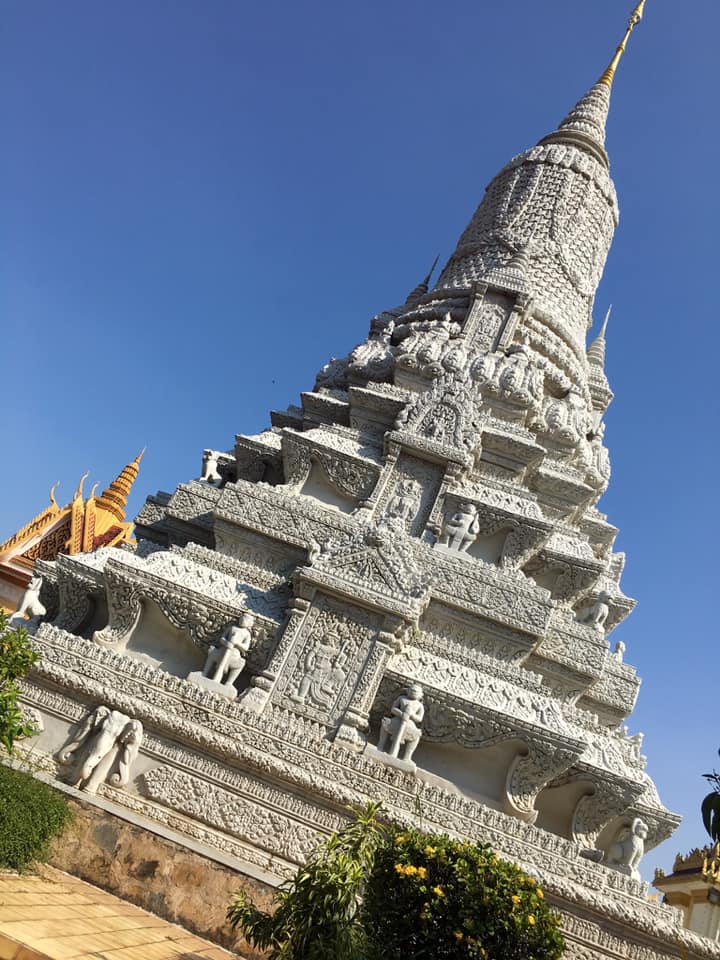
Silver Pagoda is a monument on the southern side of the Royal Palace complex. It hosts the royal temple named Wat Preah Keo. The major building preserves the gold and jeweled Buddha statues which are all irreplaceable national treasures. And the most significant one is the 17-century “Emerald Buddha” statue. Under the reign of King Sihanouk (prior to the Khmer Rouge), this pagoda was inlaid with over 5,000 silver tiles, so its name. While the pagoda holds a critical religious role, its grounds have been used for a variety of national and royal ceremonies. What’s more, the murals or the ancient paintings on the walls of the Wat tell the history of “Reamker” (Cambodia epic poem) from beginning to end. Overall, the view of the Silver Pagoda compound is amazing while the treasures inside make the site beyond price. If you start any trip to the Royal Palace, make sure you admire the Silver Pagoda.
Wat Phnom

Wat Phnom or Mountain Pagoda is a famous Buddhist site with a total height of 46m in Phnom Penh. It also holds the historical significance that indicates the Khmer national identity. Its history could be dated back to the year 1372 when a wealthy old lady “Penh” found five statues: four Buddha statues and one Vishnu statue. All these statues were then housed in a wooden temple on the top of the hill. Since then, they were blessed by local monks who named the site “Wat Phnom” as it’s known today. Going through several times of reconstructions in the 19th century and in 1926, the sanctuary has many murals depicting stories of Jataka and the “Reamker” (the nation’s epic poem). On the southwest side of the temple is a shrine worshipping Lady Penh. Daily, the wat and its surrounding religious construction are visited by local prayers who also give offerings. Wat Phnom once appeared on the Travel Channel documentary “1,000 Places to See Before You Die.”
Independence Monument
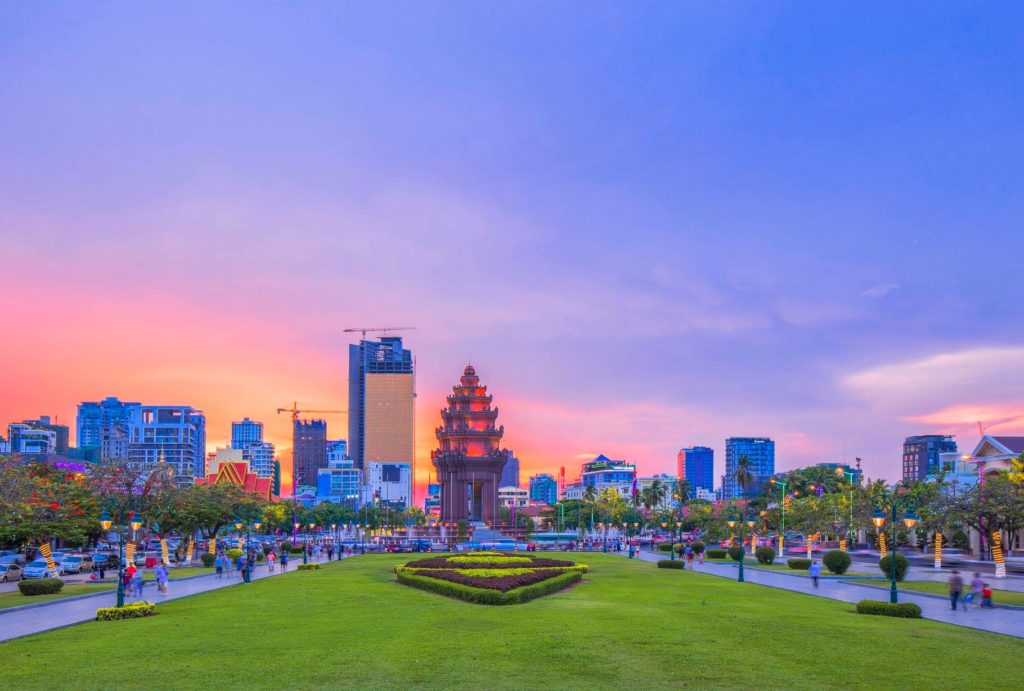
The monument was constructed in 1958 to memorize the milestone when Cambodia declared independence from France. The site is located on a roundabout at the intersection of Norodom and Sihanouk Boulevards in the heart of Phnom Penh city. The construction is in a lotus-shaped stupa form, which is a popular style of Khmer historical temples. It was designed by the Cambodian architect “Vann Molyvann” chosen by Prince Norodom Sihanouk who decided on how it should look like, blending “between religious and secular.” The Independence Monument has a total height of 37m. On the occasions of national events, a royal or high official will light a ceremonial flame on the interior pedestal. Besides, floral tributes fill up the stairs. Standing serenely and untouched by the chaos, the monument reflected an authentic work of art combing Khmer tradition and modern construction techniques.
Russian Market
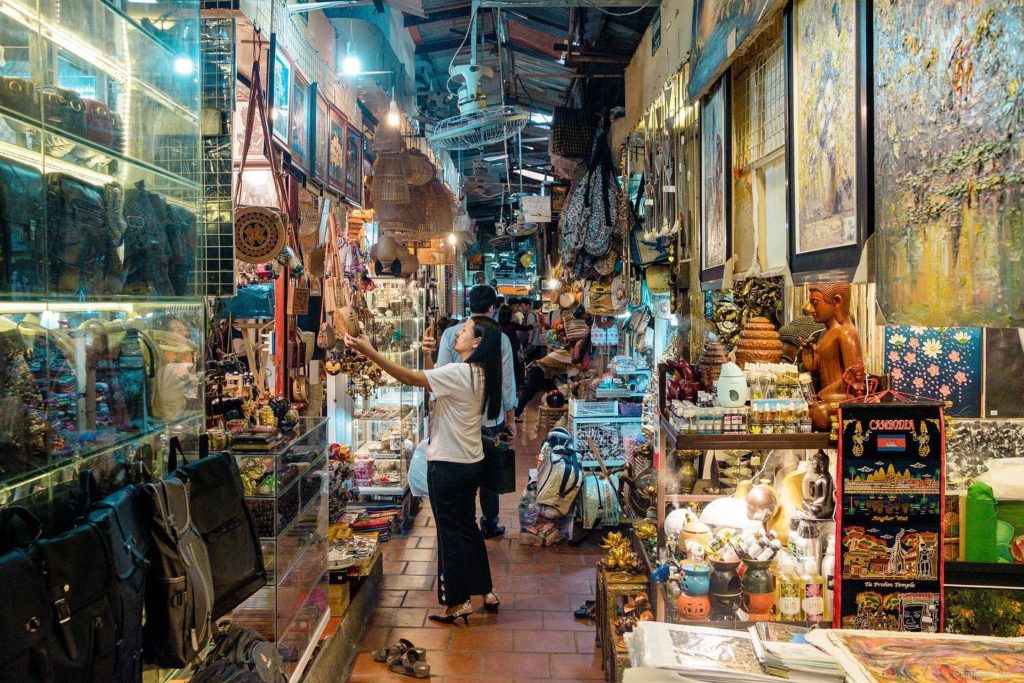
The Russian Market in Phnom Penh (known to the locals as Phsar Toul Tom Poung) is frequently visited by tourists who come to buy souvenirs and eat Khmer street food. The reason why it was named “Russian market” is that it used to be a popular shopping address for Russian expats during the 1980s when most of the Western expats in Phnom Penh were Russian. This venue provides opportunities for cultural exchanges as most foreigners enjoy spending time in the market talking with the locals. This way, they get a bit more insight into the local culture and the experiences are all nice. The site is filled with iconic souvenirs of Cambodia. Whether or not you like shopping, the colorful and lively atmosphere also provides fun, making the Russian Market one of the major tourist attractions in Phnom Penh. You can also try bargaining at the markets to get good deals. People love the vibe and assortment of various stalls in this address as there are loads to see, buy, and eat. There are some kinds of stuff in the market that could not be found elsewhere; most tourists buy Apsara small figure displays, so pick your favorites.
Killing Fields of Choeung Ek
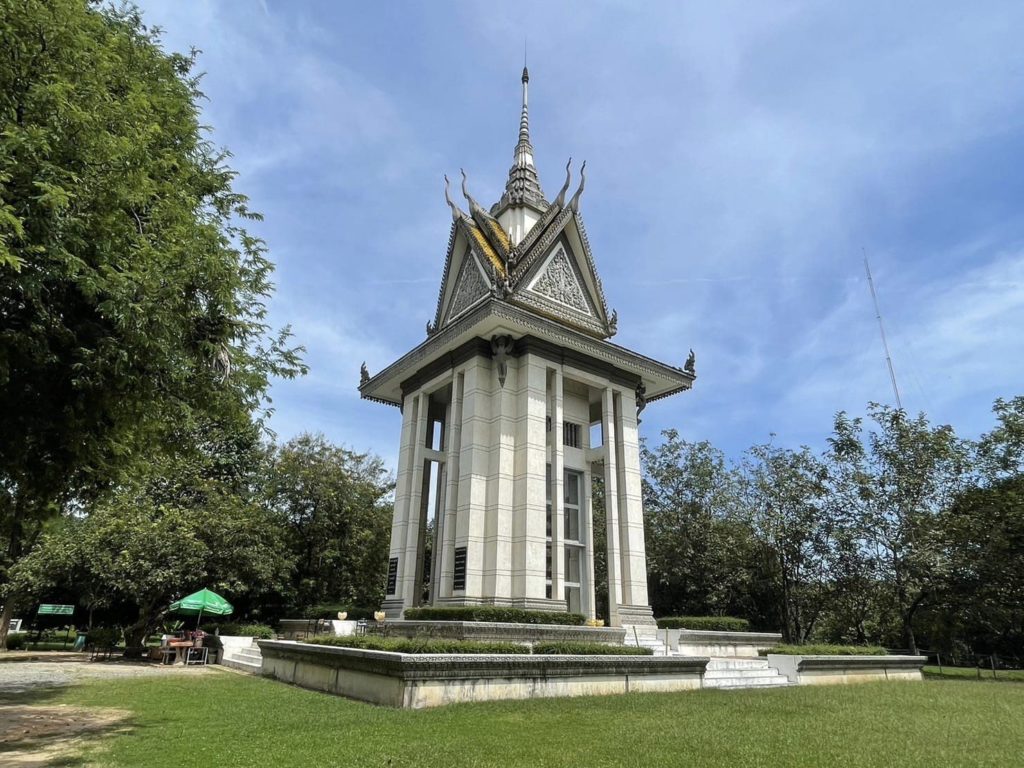
One of the controversial Phnom Penh tourist attractions is the Killing Fields of Choeung Ek. Choeung Ek is a mass grave of victims killed by the evil Khmer Rouge in a period from 1975 to 1979. The “Killing Fields” is located in Dangkao Section, around 17km south of Phnom Penh city center. It witnessed the crime of the Khmer Rouge regime that executed more than 1 million victims. After the fall of this regime, thousands of bodies were discovered in the fields; many of the dead were political prisoners prisoned in Tuol Sleng and other detention centers in Cambodia. Nowadays, the Killing Fields of Choeung Ek becomes a memorial site, with a Buddhist stupa to commemorate the dead. The acrylic glass sides of the stupa are filled with over 5,000 human skulls. Parts of the fields are open during the days for tourists to visit. Besides the stupa, visitors can find the mass graves on the spot and listen to the accompanying tour guides about the tragic history. Just outside of the booming city, the Killing Fields are a reminder of Cambodia’s tragic past, which has an educational power, but not all tourists like the visit to this place.
Tuol Sleng Genocide Museum
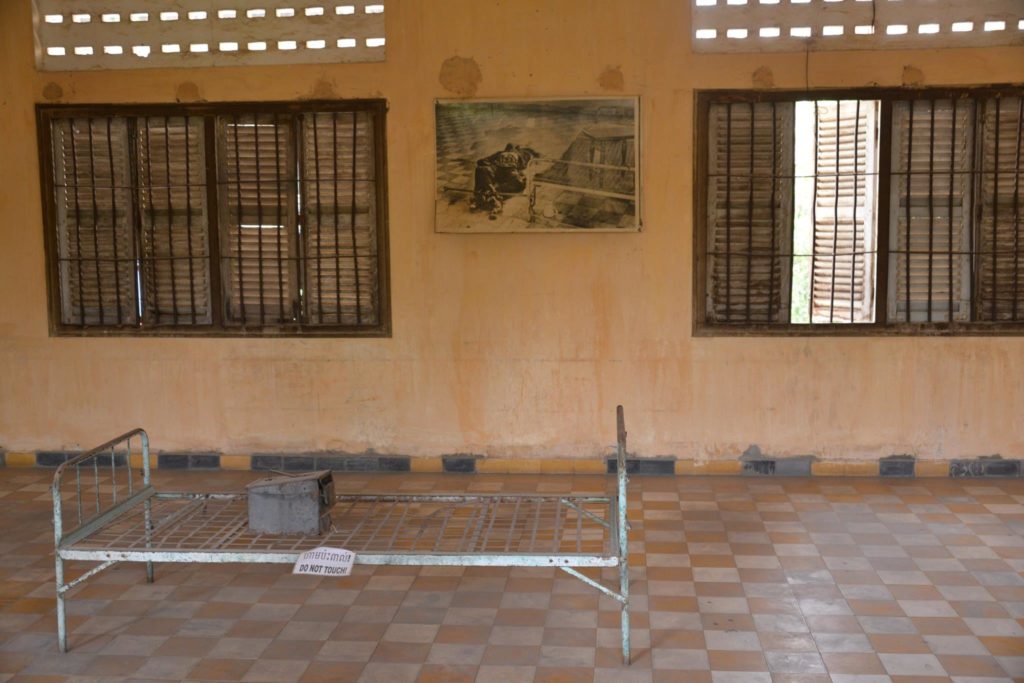
Tuol Sleng Genocide Museum chronicles the Cambodian genocide. It was once used as Security Prison 21 (S-21) by the Khmer Rouge regime from 1975 to 1979. During the evil regime, there estimated over 20,000 prisoners in this area, which functioned as one of the torture and execution centers of the Khmer Rouge. At that time, most of the school rooms were divided into prison cells. Nowadays, people can still witness the razor wine around the perimeter besides many other objects on display, such as the photographs of prisoners. What’s more, there remain many cabinets filled with human skulls and even the skull map. Along with that, the Security of Regulation board is exhibited for visitors to know the 10 rules that prisoners needed to follow during incarceration. Toul Sleng Genocide Museum is a popular educational site and memorial visited by Cambodian students who tour and study their country’s history. The museum is open to the public from 08:00 AM to 05:00 PM. This Phnom Penh tourist attraction is not for mentally weak people.
Temples of Oudong (43km from Phnom Penh)
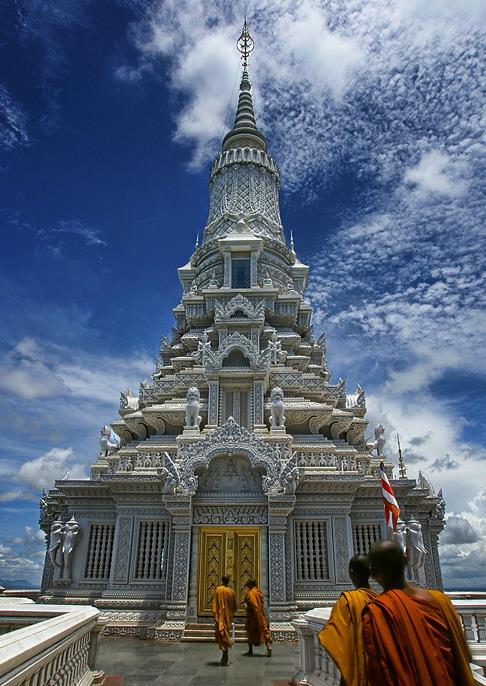
Oudong (Udong or Odong) was the former capital of Cambodia for over 250 years till the middle of the 19th century when King Norodom moved its capital to Phnom Penh. Oudong town now is situated in Phsar Daek Commune, around 43 km from Phnom Penh city center. The town is set nearby the Phnom Oudong mountain, in which many ancient temples are situated. Especially, the site has 16 stupas of the earlier Khmer kings and their royal families who followed Theravada Buddhism, of which 13 are on the mountain while the remaining 3 are at the foothill. Nowadays, Oudong is an attractive tourist attraction for a back-in-time journey and pilgrimage to religious monuments. Visitors would be interested in the image of Buddha attaining Nirvana on the lower summit of the mountain. There remain various pagodas, prayer halls, and Buddhist viharas for your visit. Oftentimes, the sites to see in Oudong include the Oudong mountain, Damrei Sam Poan stupa, Ang Doung stupa, Sontte Wan Buddhist Meditation Center, and Oudong Village.
Phnom Chisor (70km from Phnom Penh)
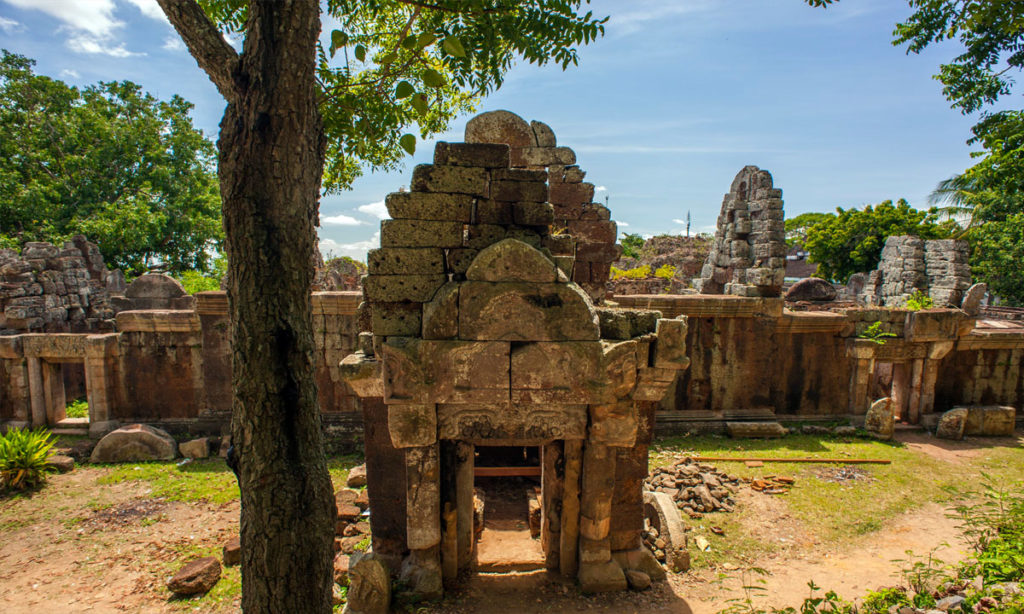
Phnom Chisor (Chisor Mountain) has a total height of 133 meters, located in Dok Por village, Takeo Province, around 70km from Phnom Penh city center. On the top of the mountain is an ancient Khmer temple named Prasat Phnom Chisor, which was built in the 11th century and of laterite and bricks with sandstone carvings at the behest of King Suryavarman I. The temple was dedicated to Shiva and Vishnu, the Hindu divinities, originally. However, as the Khmer Kings converted to Buddhism, other temples on the site were marked with depictions of Buddha. The view from the hill is stunning as visitors can spread their eyes toward a vast plain of rice fields, countryside, and temples at the foothill. Ascending approximately 500 steps to reach the summit, people will be rewarded with a magnificent and serene view. The original temple complex is now surrounded by several modern buildings used as worshipping places and training centers for young monks. Therefore, visitors getting to Phnom Chisor temples should dress respectfully when they stroll around the religious sites.
Some Cambodia tours including visit to Phnom Penh City
Cambodia Tour Package 10 Days
Cambodia Tour Package 13 Days
The essentials of Cambodia capital city will never let you down as there are great Phnom Penh tourist attractions to see and memorable experiences to get. It is the right venue for budget-minded travelers who are looking for the best experiences in Indochina tours. The temples, pagodas, palaces, remnants of the French colonial period, historical landmarks, etc., fill your trips to Phnom Penh with excitement.

